For those mystery fans who may be in the dark about the title of this post, it’s a reference to Dear Evan Hansen, the award-winning musical about a lonely boy on the spectrum who one day decides to have a drink with his prospective father-in-law over a game of bows-and-arrows behind the locked door of the man’s study. . .

Oh, wait! I really should remember not to mix my fixations together! Dear Evan Hansen isn’t a mystery at all; it’s about how the lies and deceit surrounding a young man’s death nearly destroy the lives of a small circle of peo-
Okay, now I’m really confused. The truth of the matter is that I’m home, sick in bed, as I write this. My cold has kept me from work, made me woozy, and affected my sense of humor. How ironic that it has also given me some rare-for-these-days spare time to spend putting together another post in my continuous Celebration of Carter Dickson! I started this thread ten months ago, and yet it was almost three years ago to the day that I read my first Dickson mystery, The Judas Window. I figured to myself that it was about bleeding time I gave up this purposeless aversion to the pseudonym and, as you must be aware by now, was I glad I gave that up! And yet, for reasons I cannot fathom, I did not review the book on this blog and have only mentioned it in passing. Since so much time and so many book reviews had followed, and since everyone’s “first” holds a special place in his heart, I decided to give TJW a re-read in preparation for this post.
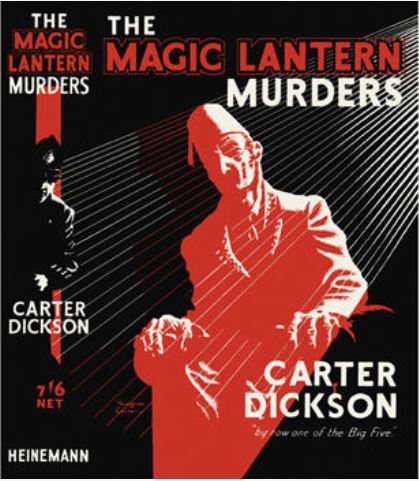 Loved, loved, loved it!
Loved, loved, loved it!
After the zany shenanigans of The Punch and Judy Murders (which shot that novel right to the top of my rankings list), Dickson returns to his more traditional roots with a bang. (Or is that a “thwang,” arrow fans?) The prologue of The Judas Window has to be one of the greatest ever openings in classic mystery fiction. Dickson gets right into it, although he takes a moment right from the start to endear us to his ill-fated protagonist:
“Jimmy Answell was large, good-natured and fair-haired. He was just such an easygoing sort as people like, and there was no malice in him. His hobby was the reading of murder mysteries, like your hobby and mine. He sometimes took too much to drink, and he sometimes made a fool of himself, even as you and I. finally, as heir to the estate of his late mother, he might be considered a very eligible bachelor indeed.”
Jimmy has recently fallen in love at first sight. It takes him no more than a week to meet, woo, and propose to Mary Hume, who was introduced to Jimmy at a Christmas house party by his cousin Reginald. When the opportunity presents itself for Jimmy to travel up to town, he decides to look up Mary’s father, distinguished bank director Avory Hume, to formally ask for his daughter’s hand. It’s unfortunate that Hume did not read the opening paragraph above because although he agrees to meet with Mary’s suitor, his manner is “of a freezing formality” that suggests enmity rather than paternal fondness. Is this why Mary seemed so frightened when she sent Jimmy off on his train?
It’s also unfortunate that Hume is an archery enthusiast, but we’ll get to that later.
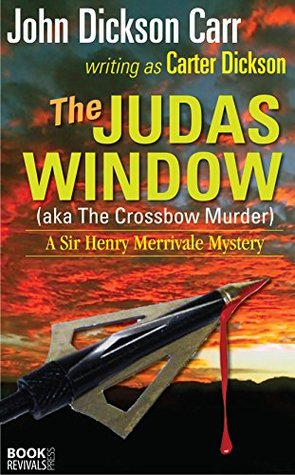
Jimmy arrives as 12 Grosvenor Street. He meets the butler Dyer. He sees on the staircase the respectable Amelia Jordan, Hume’s confidential secretary and housekeeper. He finds no sign of the other occupant of the house, Hume’s brother, Dr. Spencer Hume. Avory is closing a chessboard as Jimmy is showed into his study. Could he have been playing a game with his neighbor and fellow archery nut, Randolph Fleming?
(Let’s see: Jimmy, Mary, Reggie, Dyer, Amelia, Spencer, Fleming . . . the closed circle is complete.)
Jimmy finds something sinister behind his host’s noncommittal manner and his rather sinister description of his passion for, and prowess at, archery, so he gratefully accepts a whisky and soda. The drink, it turns out, has been doctored, and Jimmy passes out. When he wakes up, his host is dead, shot in the chest with one of the arrows that had been arranged as trophies on the study wall. The door is locked. The windows are shuttered. The whisky and soda bottles are untouched and unblemished. There is nobody present in the room but a dead man and the innocent stranger who is about to be arrested and tried for his murder.

What follows is a courtroom drama as rollicking as any you ever found in Perry Mason but with a distinctly British bent (emphasis on “bent”!) The court is presided over by the “red judge, Mr. Justice Bodkin, “a very short plump man whose robe of scarlet slashed with black made him look even shorter and stouter.” The defendant sits on the dock with “a certain air about him which gave the impression that he did not now particularly care a curse what happened.” And if you look carefully to the reserved seats behind counsel, you will catch our old friends, Ken Blake and his lovely wife Evelyn, returning to the Dickson fold for one last bout.
One could imagine that Ken has been sent by Sir Henry Merrivale to take careful notes of the case and report back every evening so that the Old Man can sit back in his office, close his eyes, and play armchair detective. Isn’t that how it is always done in H.M.’s universe? But this time . . . this time, I direct your attention to the Counsel for the Defense:
“H.M. . . . was sitting alone on the left of the front bench: his elbows outthrust on the desk, so that his ancient gown made him look still broader, and his wig sitting strangely on him . . .
“’But he shouldn’t have come into court, (Evelyn) insisted. ‘He took silk before the war, but Lollypop (H.M.’s voluptuous secretary) told me herself he hasn’t accepted a brief in fifteen years, and they’ll eat him. Look at him down there, sitting like a boiled owl! And if they begin to get under his skin he won’t behave himself; you know he won’t.’”
The great joy of course – for we’re still into the early works, when Sir Henry’s hijinks were genuinely funny and not comic padding – is that H.M. does not behave himself, and a good time is had by all . . . well, all but the defendant, the witnesses upon whom the Old Man levels his beady eye, and the murderer.
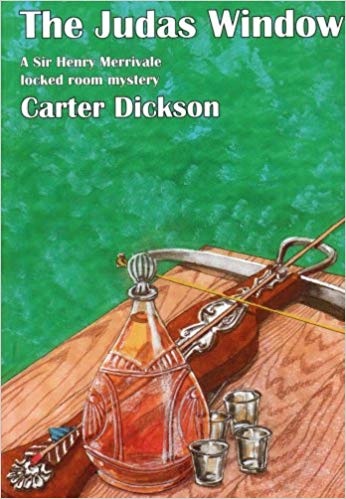
A murder trial is one of my favorite settings for the unfolding of a murder investigation. There’s no “dragging the Marsh” here: the testimony is terse, and the court reactions supply a certain entertainment value of which a stolid police investigator seems incapable. This format also changes up the way H.M. typically works. Most of the great sleuths have that deliciously infuriating habit of keeping nearly all their cards close to the vest until the final quarter or so of the novel. As the Old Man explains to the Blakes, such trickery is not possible here:
“What’s more, if you’re lookin’ for any dramatic last-minute eruption of the hidden witness bustin’ into court and causin’ a row, get it out of your heads. You’d no more cause a row in Balmy Bodkin’s court than you’d find one on a chessboard. It’s all goin’ to be on the table all the time – and that’s how I want it. One quiet move to another. Like chess. Or maybe like hunting.”
Things are not quite as open as that. Every time a witness takes the stand to tighten the damning case against young Answell, H.M. asks a few questions that cast doubt and suggest that we should be examining this or that event from a different angle. It’s like Dickson is presenting a series of mini-puzzles to get our minds racing along, a sort of hint that although it looks darkest before the dawn, the great detective is here, and the dawn approacheth!
All Carr/Dickson enthusiasts will avow that one way in which he excels above all others is in the placement of an earth-shattering twist somewhere at the mid-point of a case. At their best, these twists turn everything around and/or make sense of some of the most confounding facts. Such a twist occurs here, and it is utterly delightful.
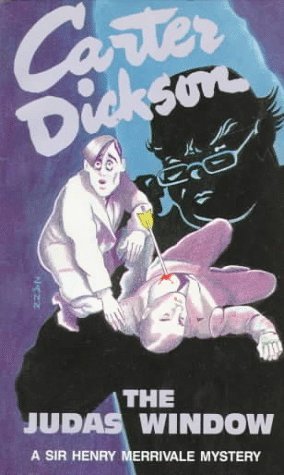
And that, I think, is where The Judas Window falters just a touch. Because the denouement is not quite as satisfying as what occurs before. As often happens for me with Carr, I did not solve this one (hooray!) because I could not have solved it. I can’t say it’s because the author doesn’t play fair; it’s just that I clearly didn’t take enough of the right subjects in school to be able to wrap my mind around this murder. Oddly enough, I recently read another mystery that has a Judas Window in it, although not in any sort of major way. I understood that window, but I failed to wrap my feeble little mind around this one. Honestly, there should be classes to train impossible crime fans!
However, this mental hiccup on my part is not enough to damage one’s sheer enjoyment of this fine entry in the series, for its deliciously impossible trap set forth in that fabulous opening, for the way the noose almost literally tightens around an innocent man’s throat, and for its humor. Also, for once, Sir Henry Merrivale is put front and center, and it couldn’t have happened at a better time. He is at the sterling point of his literary career; in another five years, his antics will start to resemble the worst of the Ealing comedies and slowly (quite slowly, thank goodness) bring down the quality of Dickson’s work. For now, however, we revel in his glory.
Court adjourned. Let’s retire to the pub, raise our mugs of chicken soup, and sing songs from Dear Evan Hansen.
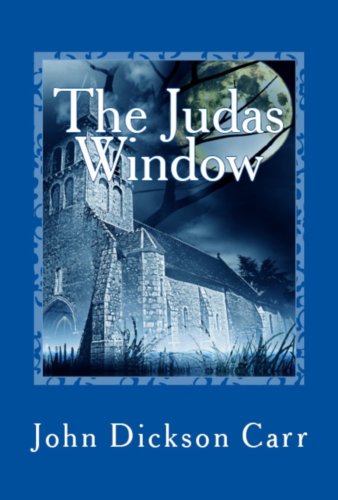
Here are my rankings thus far:
- The Punch and Judy Murders
- The Judas Window
- The Red Widow Murders
- The Plague Court Murders
- The Unicorn Murders
- The Ten Teacups
- The White Priory Murders
- The Bowstring Murders
A great book. I reread this back around Easter, when I had some time off and was able to revel in Carr’s world without pesky work distractions. I’d forgotten most of the detail in the dozen years or so since my first exposure to the story so I had a fine time with it. Is it a bit anti-climactic? I suppose if I wanted to be extraordinarily harsh, I might say it is. But the fact remains the whole thing just works so well and it all hangs together and strikes the right balance between mystery, thrills and the lighter stuff.
LikeLiked by 1 person
I agree, Colin! It was the perfect entry into the Dickson side of things, making me feel more than a little silly that I had taken so long to get there. I have a friend (I won’t mention his name, let’s call him GG) who finds this one disappointing. He, of course, is wrong, and we are right. I think it balances all the elements out so well.
LikeLiked by 1 person
If you know a horse who finds this disappointing, did you consider that if you ask a horse anything — “Do you think The Judas Window is the best Carter Dickson novel?” for instance — it’ll answer “neigh” whatever it thinks?
Also, I’d say that anyone whom this disappoints probably has that response for the exact reason you outline above: the middle twist is so damned good that afterwards it’s all a little bit…meh.
LikeLiked by 1 person
“I have a friend (I won’t mention his name, let’s call him GG) who finds this one disappointing,”
Can you give some hint as to who is this crazy person ? 🙂
LikeLike
It’s one of my favorites. I particularly enjoy the way HM rubs everyone’s nose in the concept of a “Judas window” without explaining it of course until its proper place in the revelation of the plot. I agree with you that (for the most part) the best Dickson stories are the early ones, especially “The Plague Court Murders,” another of my favorites. I do wish more of them were readily available!
LikeLiked by 3 people
The real crime, Les, is that they are not still being published. I know these things are complicated, but sheesh! I see Otto Penzler has released a few classic Carrs. We’ll just have to see if those sales take off enough to merit further re-releases. Meanwhile, I’ve been lucky to create pretty much a complete collection of CD titles in my hunt for used titles. But, man, has it cost me!
LikeLike
This may be my favourite Merrivale in fact – glad it stands up for you. With SHE DIED A LADY, this is how I try to hook newbies 😎
LikeLiked by 1 person
No spoilers here, but expect SDaL to rank very high when we get there!!!
LikeLike
I agree completely. And the story The House in Goblin Wood, which is perhaps his masterpiece, under either name.
LikeLike
There is so much fun here that I do not mind that the final few pages are perhaps slightly disappointing. As a late baby boomer, I find both Carr (and Gladys Mitchell) illuminating in how accepting of sexual indiscretions popular 1930s UK fiction could be. I also agree that SDaL is a fun read and would add Constant Suicides to the books I would lend to people to encourage them to try Carr.
LikeLiked by 1 person
I think American authors were more inclined to go for the sexual deviancy. From the very first book, Carr introduced highly sexualized women in a surprisingly modern way. Patrick Quentin did the same thing with women and men of multiple orientations. I know that Miss Marple was quite aware of illegitimate babies, bigamy, tawdry affairs and other “perversions”, but it was all presented in a much more “well-scrubbed” fashion.
LikeLike
Yeah, this was an early Carr title for me, and I was fairly taken aback at the frankness of the sexual indiscretions that form a large part of the plot. Who knew that anyone knew about sex before the 1990s?!
LikeLike
Pssst. Your parents. Pass it on.
LikeLike
This was my fourth Carr novel and I read it with mouth hanging open through to the end. There’s that odd moment of realization early on that this is going to be a courtroom mystery, but if there is a finer execution of one, please let me know.
Similar to The Emperor’s Snuff Box, I feel like there’s a taunt in the title. Every room has its Judas window, and Carr proves that to be true in the end. Sure, there’s a bit of a complexity in it, but at the same time, the core concept is dead simple. For all the latitude that we grant Till Death Do Us Part, this one is just as much a headlong sprint throughout, and the technique of the solution is actually more straight forward.
Top five Carr title? Without a doubt. At the same time, I’m amazed by the list of Carter Dickson books you’ve gone through to get here. I can’t imagine any author has as fine of a run, and that includes Carr under his real name. Even the bottom of your list – The Bowstring Murders, The White Priory Murders, The Ten Teacups – ha, give that to any other author as their sole output and we’d still be talking about them to this day.
LikeLike
I never read a classic author in order, nor did I have enough knowledge of anybody’s canon to know which were the “good” ones and which were not. In hindsight, I think that ignorance was the most blissful of advantages. The closest I came, I guess, was Ellery Queen because in the 70’s, the books were re-released by Period. Thus, I read the international mysteries (well, most of them) before I got to Period 2. But if I had started Christie with a run of her 20’s novels, I probably would have quit. That might hold true with Bencolin, given how young I was when I started.
At any rate, this is a first for me, and it has been a fascinating experiment. I know that the road will have some bumps (I’m still trying to figure out what to do with Fatal Descent) and that the ending may not be so hot. But as you say, Ben, look at how great even the “bottom rung” Carr/Dicksons are compared with so many other authors!
On to Death in Five Boxes!
LikeLiked by 1 person
I think this was the very first Carr novel I read that didn’t have one too many of Carr’s dramatic and farcical scenes I find off-putting; “Green Capsule” had one, while “Plague Court” had too many. 😑 So it made me want to read more Carr novels. 😊
*SPOILERS*
But I also recall not loving it much… I can’t quite remember the solution, except that it might have involved doorknobs – am I right? I recall not feeling especially inspired or persuaded. 😅
LikeLike
This is next on my list. I was a tiny bit disappointed with He Wouldn’t Kill Patience. Those comedic antics at the beginning (perhaps some fo those you refer to) got tiresome. It’ll be interesting to see him in a courtroom setting.
LikeLike
The broad comedy at the start of HWKP is one of the most frustrating elements of Carr’s work for me. Arguably there’s a superb counter-point in the preternaturally tense showdown, but the sheer knockabout farce of that opening does, I feel, lead to a sort of misprision of what sort of book Carr has written. And that’s a damn shame, because in every other regard I really, really like it.
LikeLike
Agreed. He Who Whispers is still the best I’ve read. But The Problem of the Green Capsule and It Walks by Night are on the way. Apparently, those are solid rivals.
LikeLike
Er, I’d temper expectations for IWbN a little. It’s good, and very enjoyable, but also very obviously an apprentice work — like every famous author with a large output, the early books don’t really catch them at their most successful. IWbN is mature and beautifully atmospheric, but putting it among the finest in Carr’s canon would be an act of optimism so wilful as to border on sycophancy.
LikeLike
He Who Whispers is my favorite JDC title, partly because it is so emotional. The Emperor’s Snuffbox has a similar intensity; unfortunately, I glommed onto the answer AS IT HAPPENED! I think Green Capsule is a better puzzle than HWW and ranks just below it. As I start to figure out my “Top Ten” these two would have places of honor on that list. (I’m afraid It Walks By Night wouldn’t.)
LikeLike
I agree that the middle twist is stronger than the final revelations, but I think that’s because of their nature: I think the revelation of the reason behind a behavioral discrepancy is almost always greater than any other kind of surprise.
Incidentally, I remember when Merrivale claimed “every door has a Judas Window” and then explained what that meant, my mind immediately kept to swinging saloon type doors and thinking “no, they don’t!” But the point is taken, and the answer there is a great simple, revolutionary one (even if the use of the Judas Window is more complex).
As for the middle twist outshining the final solution, I suppose that could be said of Till Death Us Part as well (maybe my favorite Carr novel), but in neither do I consider the resolution markedly inferior enough to qualify as an anticlimax (unlike the Crooked Hinge, in which I feel the too thinly-clued solution is a definite let down from what came before).
I realize that I’m in the minority here, but I actually think I would’ve preferred that, rather than playing Wilfrid Robarts in Witness for the Prosecution, Charles Laughton had played Merrivale in an adaptation of The Judas Window. Laughlin’s performance in the Wilder film is a gem, but I don’t actually feel the film is the equal of it (I feel Wilder took some missteps both in the casting and the direction of it). And I frankly feel the deceptions in The Judas Window are easier to convey onscreen.
LikeLike
The casting of Romaine is problematic, and the addition of the nurse adds twenty unnecessary minutes to the film. And yet I adore Lanchester in the film, and Dietrich, who isn’t my favorite actress, is still good here, although she and Tyrone Power are, to me, the odd ducks here.
LikeLike
I have far more problem with the largely unnecessary flashbacks than with the Lanchester stuff, which adds immeasurably to the entertainment value of the film.
My only problem with Dietrich in this problem is an internationally famous speech impediment which makes the deception aspect of the story more transparent.
LikeLike
Pingback: ACDC PART NINE/BOOK CLUB ’38: Death in Five Boxes | ahsweetmysteryblog
Pingback: ACDC PART TEN: In Which The Reader Is Warned . . . about The Reader Is Warned | Ah Sweet Mystery!
Pingback: ACDC, PART TWELVE: (Thumbs) Up Periscope for Nine- and Death Makes Ten | Ah Sweet Mystery!
Pingback: ACDC, PART THIRTEEN: “You’re Starting to Get Sleepy” . . . Seeing Is Believing | Ah Sweet Mystery!